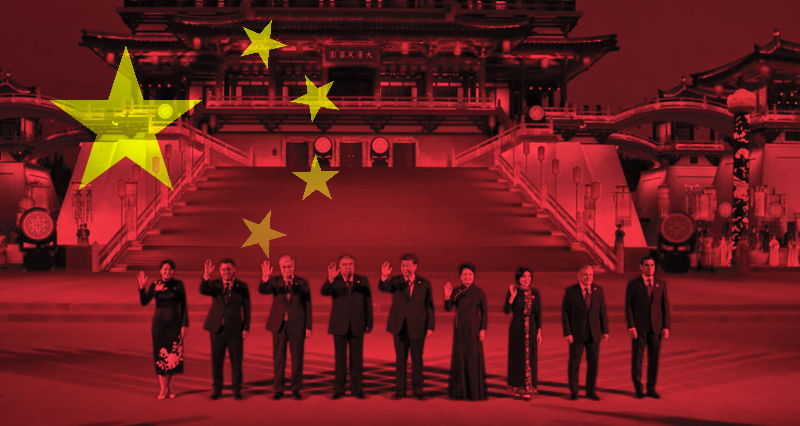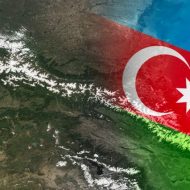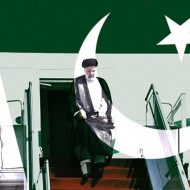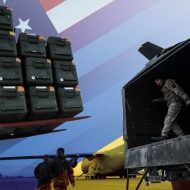Xi’an, China, the starting point of the ancient Silk Road, hosted a historic summit for the bright future of Central Asia. On May 18-19, the heads of state of Kazakhstan, Kyrgyzstan, Tajikistan, Turkmenistan and Uzbekistan met in Xian as part of the China-Central Asia Summit. Chinese President Xi Jinping hosted the summit.
Kazakh President Kassym Jomart Tokayev, Kyrgyz President Sadir Japarov, Tajik President Imamali Rahman, Uzbek President Shavkat Mirziyoyev and Turkmen President Serdar Berdimuhamedov met in China.
At last year’s foreign ministers’ meeting, China and the five countries agreed to establish the China-Central Asia Summit mechanism and that the six countries would hold summits every two years starting this year.
The first major diplomatic event
China calls this summit “the first major diplomatic event of 2023”. Even this description shows the value China attaches to its neighbors, because China has hosted a succession of European leaders in Beijing before it.
The summit is the first face-to-face meeting between China and the leaders of the five Central Asian countries since the establishment of diplomatic relations. The heads of state will not only exchange views on bilateral, multilateral, international and key regional issues, but will also sign an important political document. This summit will not only be a turning point between China and the Central Asian countries, but also an example of the realization of the principles of the new multipolar world that is being established: independence, equality, peace, respect, development and sharing.
The US plan of using pawns will not work
According to the ‘Heartland Theory’ of British geographer and politician Halford John Mackinder, Central Asia is the “heartland” of the world. Mackinder’s theory of “Who rules the Heartland rules the world” has formed the basis of the foreign policies of imperialist states.
That is why Afghanistan was the first target of the “Crusade” launched by the USA in 2001. After the US withdrew from Afghanistan in defeat, in order to maintain its influence in the region, it concentrated on sowing discord between the Central Asian countries and China and Russia. The Russia-Ukraine conflict profoundly changed the geopolitical structure of the Eurasian continent. Since Central Asia is a hub connecting the various plates of the Eurasian continent. Imperialists such as the U.S., EU and Japan have intensified their efforts to penetrate Central Asia. However, Central Asian countries have been the pioneers of the tendency to support each other to counter US attempts to destabilize the region and to realize the modernization and development of their countries.
The win-win cooperation between China and Central Asian countries, the strategic partnership between China and Russia, and the good relations between China and other countries in the region do not allow Western powers to succeed in their plans.
The West has long viewed Central Asia as pawns to be used against China and Russia. They call it a “chess figure”. This approach is the greatest disrespect to the countries of Central Asia. It ignores the sovereignty and national identity of these states and sees them only as bargaining chips to be manipulated. Bu tit is no longer valid. The genuine mutual respect and equal treatment between China and Central Asian countries has continued to foster political mutual trust between the two sides, making it difficult for outsiders to sow seeds of discord.
Plans to use Central Asian countries as Western pawns against the countries of the region have failed.
Central Asia is also where the Belt and Road Initiative was launched. This year marks the 10th anniversary of the same Belt and Road Initiative. Tajikistan was the first country in the world to sign a memorandum of understanding (MOU) with China on the construction of the Silk Road Economic Belt, and to date all five Central Asian countries have joined the initiative.
Security cooperation between China and Central Asian countries, which forms the main body of the Shanghai Cooperation Organization, also forms the backbone of Asia’s security.
The success of the Belt and Road Initiative
Last month, the foreign ministers of China and Central Asian countries met and agreed to establish a multidimensional and comprehensive network integrating roads, railways, airlines and ports.
They also agreed to expand cooperation in areas such as trade, investment, agriculture, new energy and e-commerce, and take steps to facilitate customs clearance and quarantine to promote trade facilitation.
Over the past decade, Central Asia has demonstrated how the Belt and Road Initiative is a model of win-win cooperation, from a series of infrastructure connectivity projects that have helped the landlocked region connect with other regions, to energy transmission and trade with a high degree of economic complementarity.
The China-Central Asia Gas Pipeline, China’s first international gas pipeline, transports 100 million cubic meters of natural gas per year. It supplied 43.2 billion cubic meters of natural gas to China from 2009 to 2022.
After years of negotiations and exchanges, China, Kyrgyzstan and Uzbekistan have agreed on a railway linking the three countries and construction is about to begin. This will make Xinjiang a bridgehead for the economic hub of Central Asia, connecting East Asia to Europe, the Middle East and Africa.
The China-Kyrgyzstan-Uzbekistan Railway and other Belt and Road projects will connect landlocked Central Asia to the sea.
Emerging economic cooperation
The total amount of China’s direct investments in five Central Asian countries exceeded $15 billion as of March this year, and the cumulative turnover of completed projects reached $63.9 billion, China’s Ministry of Commerce said.
China’s trade with the five Central Asian countries rose 37.4 percent year-on-year in the first four months of 2023, according to the General Administration of Customs of China. China’s trade with the five Central Asian countries in 2022 reached $70.2 billion, nearly 100 times the volume 30 years ago, Chinese Commerce Minister Wang Wentao said on April 18.
China’s imports of agricultural, energy and mineral products from the five Central Asian countries increased by more than 50 percent last year, he said.
China-Europe freight trains passing through Central Asia, the China-Kazakhstan Horgos International Border Cooperation Center and the China-Kazakhstan International Logistics Base at Lianyungang Port in eastern China’s Jiangsu Province have helped open gateways to international markets for Central Asian countries. Improved connectivity has also encouraged many Chinese companies to invest in the region.
Türkiye’s responsibility
It is in Türkiye’s interest that the five Central Asian countries, four of which are Turkic republics, establish close cooperation with China on the basis of equality and mutual benefit. The strengthening of the Central Asian Republics will also strengthen the Organization of Turkic States. The security and stability of Central Asian countries is the key to their development. A developing Central Asia serves Türkiye’s economic development. The NATO-influenced plans and intentions in the Turkish Foreign Ministry to use the Central Asian countries against China and Russia have become increasingly dangerous. If Türkiye follows NATO’s suggestions, our country will lose its influence in the region. Türkiye will increase its influence and assume leading positions in the emerging Asian civilization if it takes leading positions in the development of relations between Central Asian countries and China, Russia and Iran.
Horgos free zone will shine
Let us conclude with a beautiful proverb: “What goes around comes around!” All signs point to the Horgos International Free Zone on the China-Kazakhstan border as the area that will gain the most from the China-Central Asia Summit. This is because China’s Xinjiang Uyghur Autonomous Region will serve as a crossroads for economic cooperation with Central Asian countries. In fact, Ma Xinrui, the CPC Secretary of the Uyghur Autonomous Region, visited Kazakhstan, Uzbekistan, Kyrgyzstan and Tajikistan in April and was received by their heads of state, setting the conditions for the success of the summit now being held.
After this summit, the Turkish Fashion Exhibition and Fashion Show to be organized by TUCEM Turkish-Chinese Business Matching Center in Horgos on August 12-14 has gained more importance. In Horgos, we will have the opportunity to reach business people not only from China but also from five Central Asian countries. The rise of Horgos as a center of international cooperation in the heart of Asia will also serve the rise of Turkish industrialists and traders.









Leave a Reply